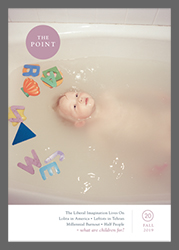fig. 7 Title page of one of af Klint’s notebooks, which she marked with “+x” to indicate works that were to be sealed until twenty years after her death
There was, on the other hand, this maybe-wanted halfperson who would never exist. But even if she had survived past ten weeks of pregnancy, and I had not aborted her, and I had raised her, and loved her, and cared for her, she would have had to leave me to become her own full person, to develop a mind and a life of her own, much of which would take place after my death. We wouldn’t have been friends.
So what happened to me was this: these two presently absent beings, these nonfriends, these halfpeople, they fused together, they gave each other substance, they made the unthinkable become more thinkable. I thought about Hilma af Klint, and her symbol “+×” (fig. 7). She painted for a future she couldn’t envisage, a future filled with people she not only knew but worked to ensure would fail to access the workings of her mind.
She withheld her art from her contemporaries, and guarded it against later intruders with an array of impossible ciphers. I thought about her as existing, as present to me, and at the same time, as lost to me forever.
And I thought about the daughter I don’t have—and the sons I do. My three sons are accessible to me, I see inside their minds, I understand how their worlds work. For now. They spin around me with a delicate spiraling motion that fans just ever so slightly outward, like af Klint’s many coils and snails. Every day, their minds become more their own and less mine. My fifteen-year-old told me last night, when I expressed surprise at what he was working on, “Mama, I have a lot of irons in the fire!” Your child is a person whose mind you inhabit less and less, who will have to one day navigate a world that doesn’t include you. She is a future stranger.
●
In the days following the miscarriage, when the shock of medical urgency had passed, when I had stopped crying, when I had the peace of mind to reflect, I was able to admit to myself that what I felt was: relief. I felt like a whole person again, for the first time in months. My nausea was gone, I could climb stairs without getting out of breath, my ravenous appetite had subsided. I could think. Pregnancy clouds the mind, and life with a newborn so much more so. Giving birth to a baby is, literally, splitting in two, and it is not always clear which one your “I” goes with. Actually, it is clear. It is clearly not you. The one that matters—the real person—is the one whose needs, cries and future you spend all your time attending to. You are reduced to almost nothing, not even half a person.
After the miscarriage, I realized I had been dreading undergoing that reduction a fourth time, dreading that slow and grueling climb back up to personhood. But I didn’t know I had been dreading it until the possibility of undergoing it was gone. And that is an astonishing piece of ignorance.
So many times during the pregnancy I had asked myself: What will it feel like if I don’t have this baby? I wasn’t trying to ask myself whether I would feel guilty about the abortion, I was trying to ask myself whether I wanted the baby. Had I known that a miscarriage would bring such relief, I believe I would have had an abortion. I didn’t want to continue a pregnancy with a baby I didn’t want—even given the fact that, were I to have her, I would surely come to want and love her.
Which is not to say that, had the miscarriage not happened, I would’ve had an abortion. I think I would have carried the pregnancy to term. Because I wouldn’t have known about the relief. I couldn’t spin out the various possibilities in advance; I couldn’t look at the different futures and compare them. Sometimes one can’t do this because one lacks the imaginative and intellectual resources to simulate the different possible outcomes. In this case that was not the problem. My husband—despite the fact that he was firmly in the pro-baby camp—was not surprised by my relief about the miscarriage. If, like him, I had taken a cold, hard look at the Agnes-data, I could’ve known easily which was, at least at that time, my desired result.
But I couldn’t take that look. I couldn’t let myself simulate the two lives, one with her and one without. I couldn’t stomach that reasoning exercise. I locked the doors of my own mind, forcing myself to stand outside them. Why? Because it seemed unconscionable to play with someone’s life that way, to simulate her into nonexistence. Even half a person is more than nothing.
Art credit: Courtesy of the Moderna Museet and the Hilma af Klint Foundation
. . . . . . . . . . . . . . . . . . . . . . . .

This essay appears in the “What are children for?” symposium in issue 20 of The Point.
If you enjoyed reading this essay, subscribe or order issue 20 today.
from Hacker News https://ift.tt/2LBsPkm
No comments:
Post a Comment
Note: Only a member of this blog may post a comment.